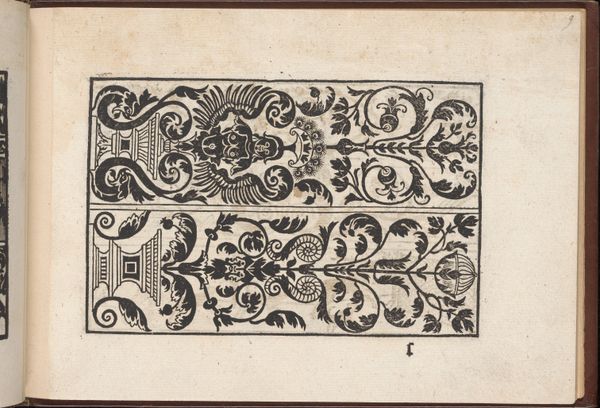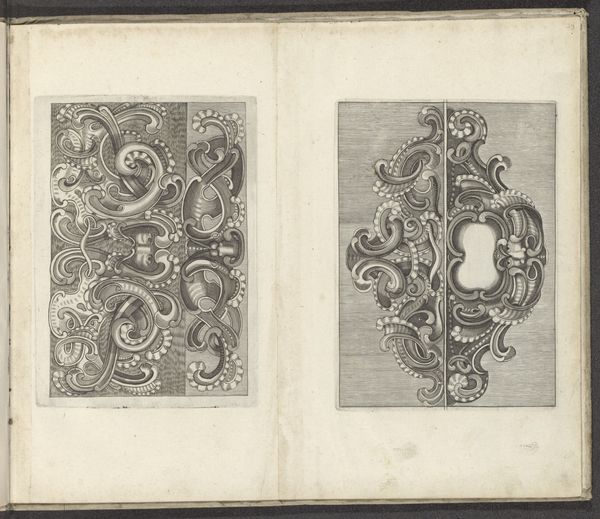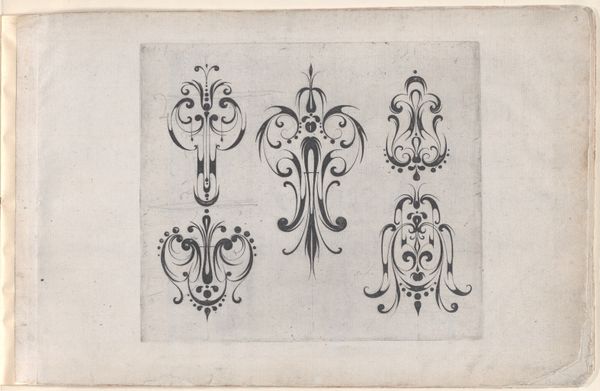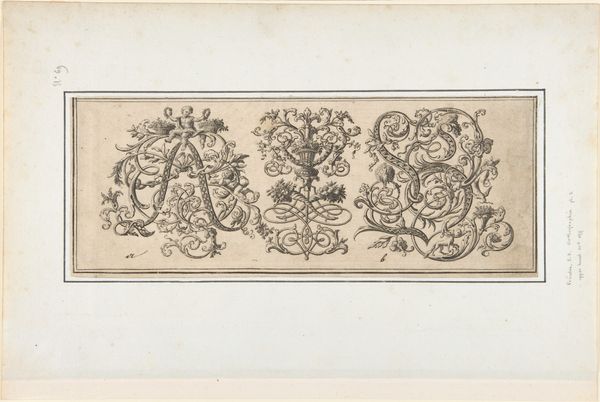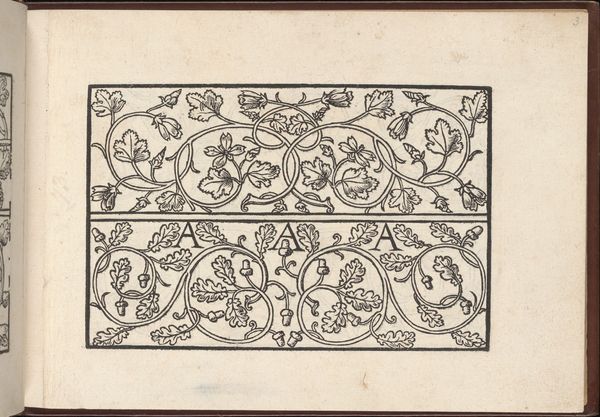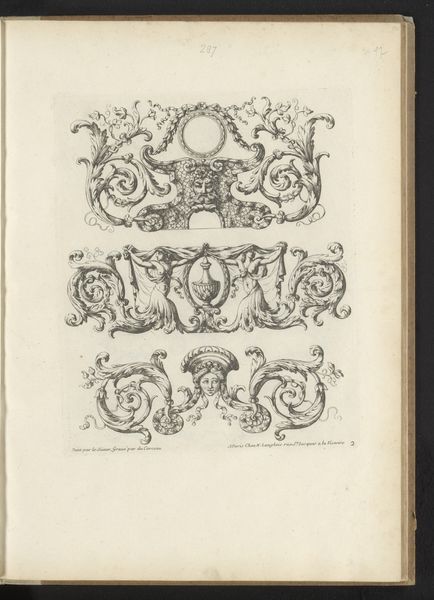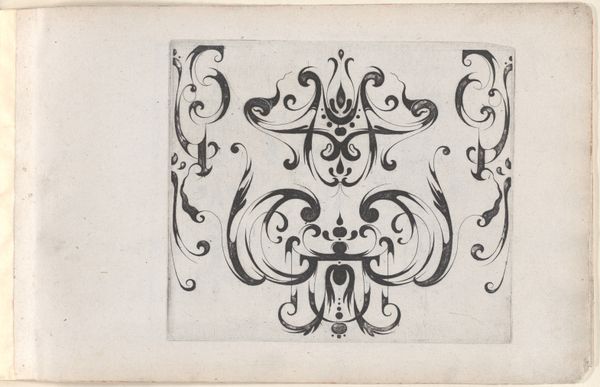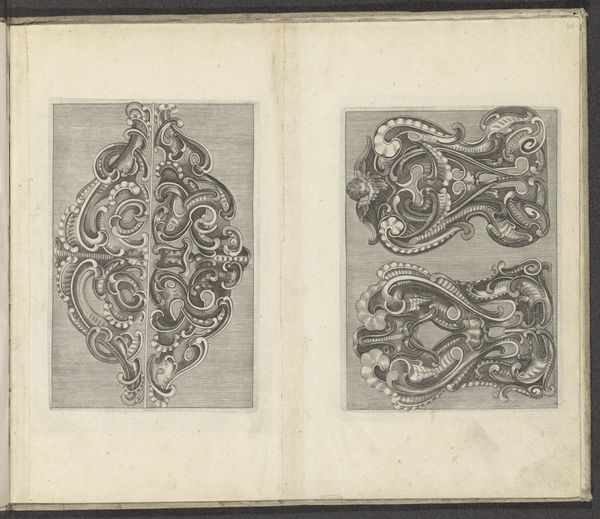
Diverses Pieces de Serruriers, page 5 (recto) 1658 - 1668
0:00
0:00
drawing, graphic-art, print, metal, engraving
#
drawing
#
graphic-art
#
baroque
#
ink paper printed
# print
#
metal
#
form
#
line
#
engraving
Dimensions: Sheet: 10 13/16 × 7 5/16 in. (27.5 × 18.5 cm) Plate: 6 11/16 × 4 3/4 in. (17 × 12 cm)
Copyright: Public Domain
Editor: This is *Diverses Pieces de Serruriers, page 5 (recto)*, by Jean Berain, dating roughly from 1658 to 1668. It's an engraving on paper featuring ornate keyhole designs. I'm struck by the almost overwhelming level of detail—it's beautiful but also quite elaborate. How should we interpret something like this from a historical perspective? Curator: That detail, the overwhelming ornamentation, is key. Consider this wasn't merely "art" in the modern sense. These designs functioned within a specific social context, shaping perceptions of power and status. Who commissioned such elaborate designs? And what did such intricate metalwork signify about their access to skilled labor and material wealth? Editor: So, the extravagance itself communicates something about power structures at the time? Curator: Precisely. Think about the palaces of Louis XIV – Versailles itself! Berain was a designer for the court. His work served to reinforce the monarchy's image of absolute authority through visual spectacle. These weren't just keyholes; they were symbols of controlled access, exclusive spaces, and ultimately, royal dominance. How might these designs influence public perceptions of the monarchy? Editor: They would have reinforced the idea of royalty being separate and elevated. Did everyone have such elaborate keyholes? Curator: Certainly not! Such craftsmanship would have been reserved for the elite. The visual disparity between the keys of the wealthy and those of the common person emphasized the existing social hierarchy. It was visual propaganda. Editor: That makes sense. It's amazing how a seemingly simple design can be loaded with so much meaning when you consider its socio-political context. I won't look at a keyhole the same way again. Curator: Exactly! Understanding art within its historical context reveals its active role in shaping societal norms and power dynamics. This object tells a much larger story.
Comments
No comments
Be the first to comment and join the conversation on the ultimate creative platform.


